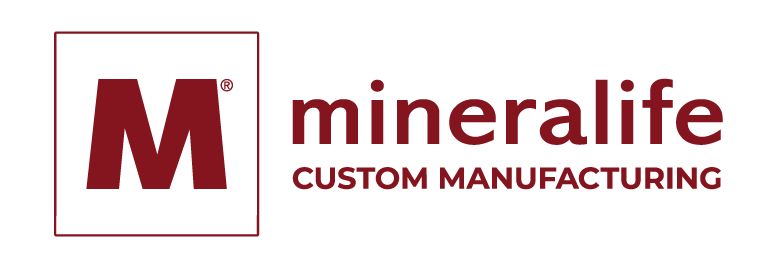Good Manufacturing Practices (GMP) is a manufacturing system composed of procedures and documentation that guarantee product control within nutraceutical manufacturing. The FDA outlines evolving regulations that GMP certified facilities adhere to. It implements proactive steps that ensure the quality and efficacy of supplements, preventing contaminated and adulterated supplements from entering the market, promoting user safety.
GMPs regulate each facet of the manufacturing process—supporting product legitimacy and consumer safety by preventing cross-contamination, mislabeling and other sources of product corruption. Manufacturing regulations create guidelines around the following scopes:
- Cleanliness
- Complaints
- Documentation
- Equipment
- Inspections
- Qualification
- Quality
- Record Keeping
- Sanitation
But how can manufacturers ensure they are meeting guidelines in each scope above?
Five Components of GMP Manufacturing
GMP manufacturing functions through five facets—people, products, processes, procedures, premises—the five P’s.
(1) People
Competent employees provide quality assurance for manufacturing facilities. Though the initial training poses investments of time and money, qualified workers employ proper documentation, equipment handling and sanitation once trained in GMP standards. They offer another level of product control through proper handling, record keeping and adherence to standard operating procedures. All employees fill an explicit roll in the manufacturing process. Routine performance reviews assess employee knowledge, competency and subsequent product control.
(2) Products
One of the most important elements of nutraceutical production rests in the primary ingredients used to create final market products. GMP requires quality assurance of all raw materials before manufacturers distribute products to consumers. Master formulas exist to ensure product safety and legitimacy. Manufacturers perform regular testing and comparison of product materials at each phase of production—strictly adhering to audited operative regulations.
(3) Premises
Facility standards support product control, quality assurance, employee and consumer safety. Proper sanitization and storage prevent contaminated and adulterated supplements from entering the market. Proper equipment handling and storage prevent employee injuries. Verifying equipment efficacy and function supports consistent production thus promoting product control.
(4) GMP Processes
Auditors routinely inspect nutraceutical manufacturing facilities and laboratories for product control and quality insurance. Processes should be standardized, documented and accessible to respective employees. Manufacturers should keep written frameworks—standard operating procedures—of all manufacturing processes. Routine internal audits support compliance between extensive FDA audits.
(5) Procedures
Manufacturers create standard operating procedures that outline detailed instructions and guidelines within an explicit manufacturing process. When the FDA audits a nutraceutical manufacturer, they scrutinize procedure documentation to test regulation compliance. Production processes in manufacturing facilities need to reflect documented operating procedures. Auditors expect procedures—and procedure documentation—to reflect current industry standards and regulations.
Nutraceutical manufacturing requires product control and quality assurance. Manufacturers utilize the five components of GMP to guarantee industry compliance.
GMP Quick Facts
Implementing the Five P’s supports compliant GMP manufacturing.
- People: trained and qualified workers prevent product and machinery errors
- Product: high-quality raw materials create effective products
- Premises: clean facilities and functional equipment support worker and consumer safety
- Processes: standardized processes support product control and compliance
- Procedures: offer standardized documentation for employees and auditors.
